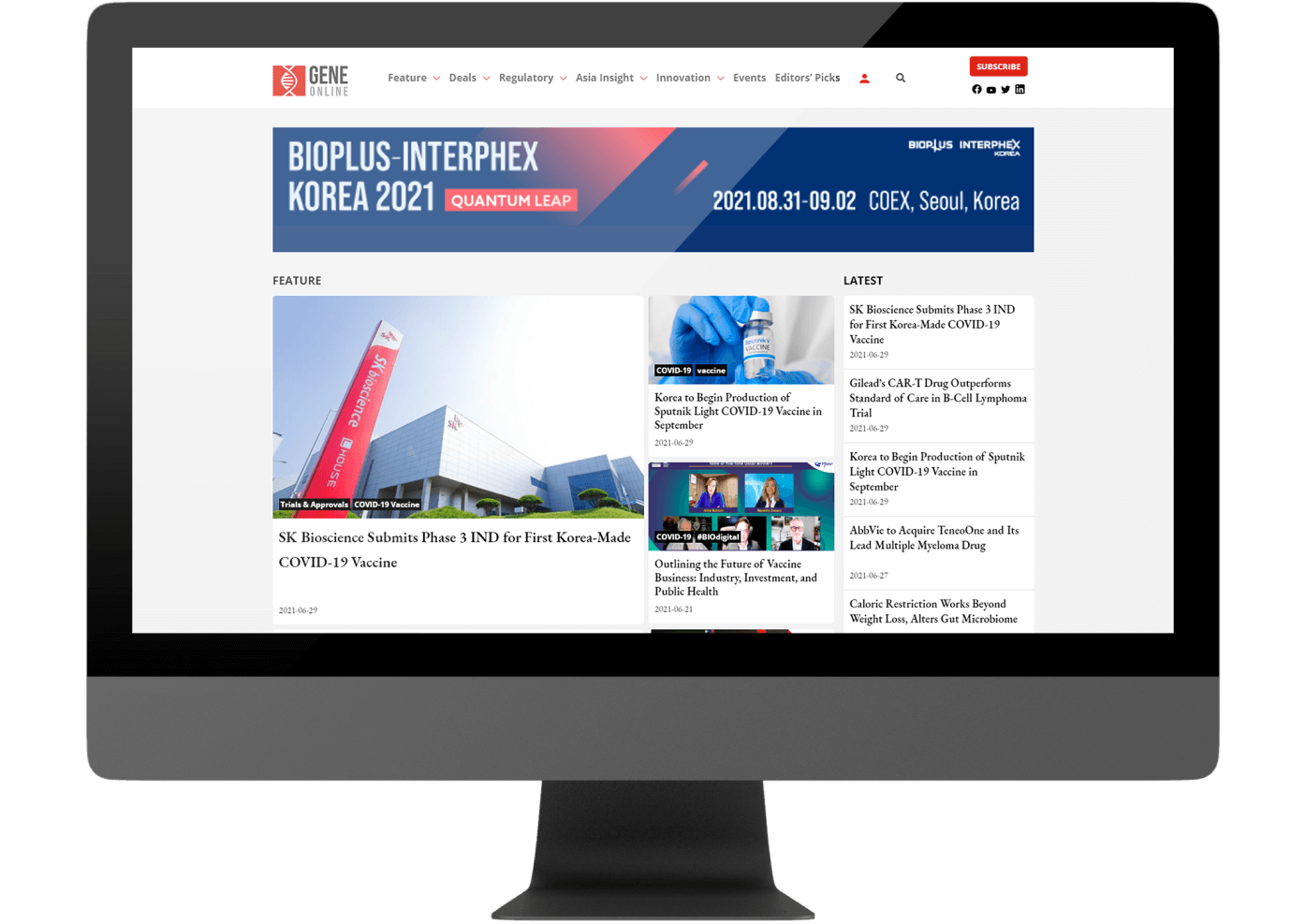BIO Asia-Taiwan Opening Day Highlights: Michael Houghton Talks About Vaccine Development, Robert Langer Shares Journey of Creating Breakthrough Technologies
The 2021 edition of BIO Asia-Taiwan, one of the biggest biotech conferences in Taiwan, kicked off on July 21st in an all virtual format. The event brought together a panel of international experts to exchange ideas and give in-depth insights into various scientific topics.
In this year’s event, Michael Houghton, the 2020 winner of the Nobel Prize in Physiology or Medicine, and Robert S. Langer, the winner of the Wolf Prize and Breakthrough Prize and co-founder of Moderna, were two of the highlights. Michael Houghton spoke on the current vaccine and therapeutic development on three indications, while Robert Langer shared the experience of creating a breakthrough technology.
To begin with, Michael Houghton introduced four vaccines from the Li Ka Shing Applied Virology Institute in Alberta University, where he currently serves as the Director. These include the COVID-19 vaccine and therapeutics, Hepatitis C virus (HCV) vaccine and Human Cytomegalovirus (HCMV) vaccine.
Blocking the Entry of COVID-19 Completely
The team developed a COVID-19 vaccine targeting the receptor-binding domain (RBD) of SARS-CoV-2’s spike protein. The vaccine demonstrated high antibody titers in animal models. In immunized mice, they found that using adjuvants like alum/MPLA or addaAS03 completely shut down the virus from entering the cells.
Moreover, the vaccine showed an equally strong neutralization in preventing the Alpha (B.1.1.7) and Beta (B.1.351) variants. This demonstrates the value of the RBD vaccine in boosting immunity against COVID-19 variants and the original strain. Therefore, annual booster shots may be required for a few years.
In addition, Houghton introduced two of the COVID-19 antiviral programs; AMK derivatives and the reversible, covalent inhibitor Nitrile analogs. Both of them have low toxicity and deliver potent activity against SARS-CoV-2. Later this year, they will be evaluated in PK and animal efficacy studies.
HCV Vaccine Shows Potency in Animal Models
The HCV vaccine developed by the institute has shown a substantial drop in the chronicity rate in the vaccinated group when tested in chimpanzee models (16% in vaccinated chimpanzees compared to 63% in the unvaccinated control). This indicates a 75% reduction in chronic persistent HCV infection. In addition, Houghton pointed out that this is the only HCV vaccine that displays efficacy and potency in the animal model to his knowledge.
The vaccine is scheduled to enter Phase 1 clinical trial in 2022 with a different adjuvant and is expected to enter Phase 2 in 2023 to 2025. Then, if proven safe and effective, it will be rolled out to people. Finally, they will deliver the vaccine to other target populations in 2028 if it passes Phase 3 trial.
Furthermore, he also mentioned developing an HBV and HCV combo vaccine to prevent all bloodborne hepatitis.
HCMV Treatment
HCMV is a DNA virus also known as the human herpesvirus-5 (HHV-5). Ganciclovir (GCV) and Letermovir are the only two FDA-approved therapies for the indication. However, Houghton pointed out that the compounds developed by the institute have shown better efficacy than the approved therapies. Besides, it can target HCMV that develops drug resistance to GCV with low toxicity. Next, the compounds will be examined in the animal models.
Barriers in Developing Breakthrough Technology
On the other end, Robert Langer shared his journey in developing a breakthrough technology for drug delivery. In studies on blood vessel growth, the inhibitors deemed effective were mostly large molecules with a short half-life. Therefore, he wanted to design a drug delivery system to protect blood vessels from injury during delivery.
He mentioned that while discussing with other scientists, his idea was often met with pessimism. “Everyone said no because if you put them (large molecules) in a solid material, they just can’t get through it.”, meaning they can’t slowly diffuse through solid materials. One article wrote, “the use of polymer matrices for slow release systems has been virtually restricted to small molecules.”
After over 200 times of trying, he finally found the solution by using lipophilic or hydrophobic materials. But he got rejected five years in a row while applying for the patent and was looked down upon for his research at conferences.
Eventually, he received the patent, and many startups and big pharmaceutical companies favored the technology. The platform is now used to treat diabetes, schizophrenia, and nicotine addiction and is also used to deliver siRNA and mRNA.
The same thing happened in the case of Moderna’s mRNA-based COVID-19 vaccine. The vaccine led to Moderna going public with one of the biggest IPOs in biotech, gaining $500 million. However, some news articles compared Moderna to Theranos and wrote, “this is not how you do science,” carrying his picture.
Now, Moderna’s COVID-19 vaccine has been approved by the US FDA for emergency use and is neck to neck in competition with Pfizer/BioNTech’s vaccine in the category. The company’s value also soared to US$ 75 billion. As Langer pointed out, mRNA is a fantastic platform that is already changing the world and will continue to do so.
©www.geneonline.com All rights reserved. Collaborate with us: service@geneonlineasia.com






